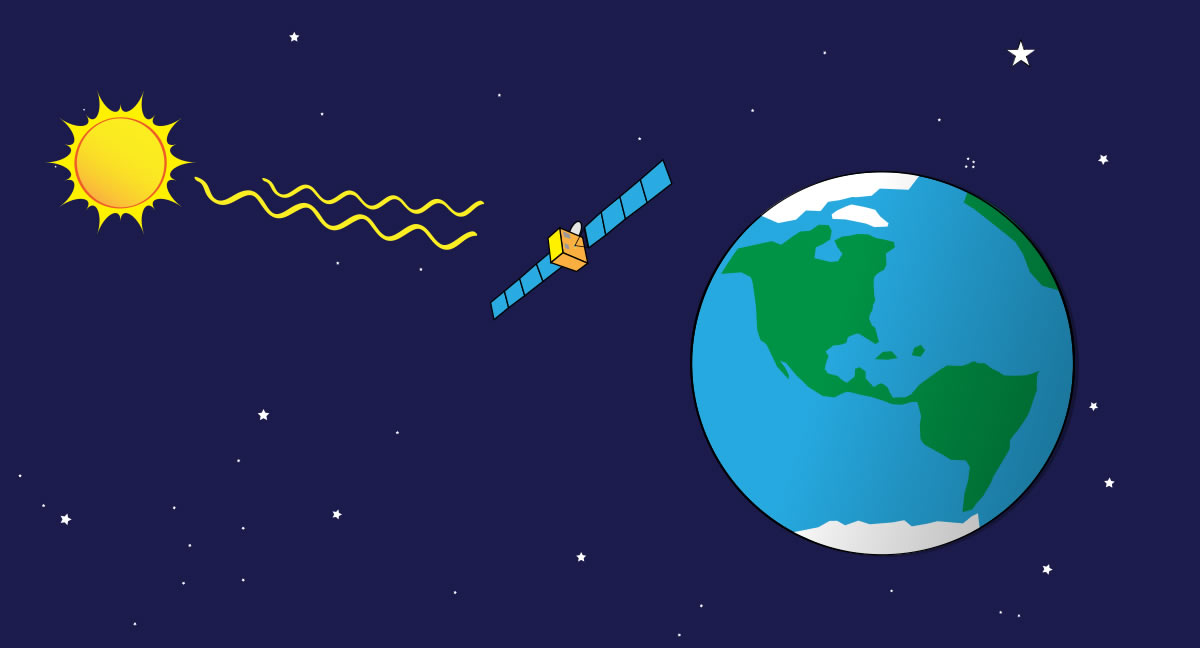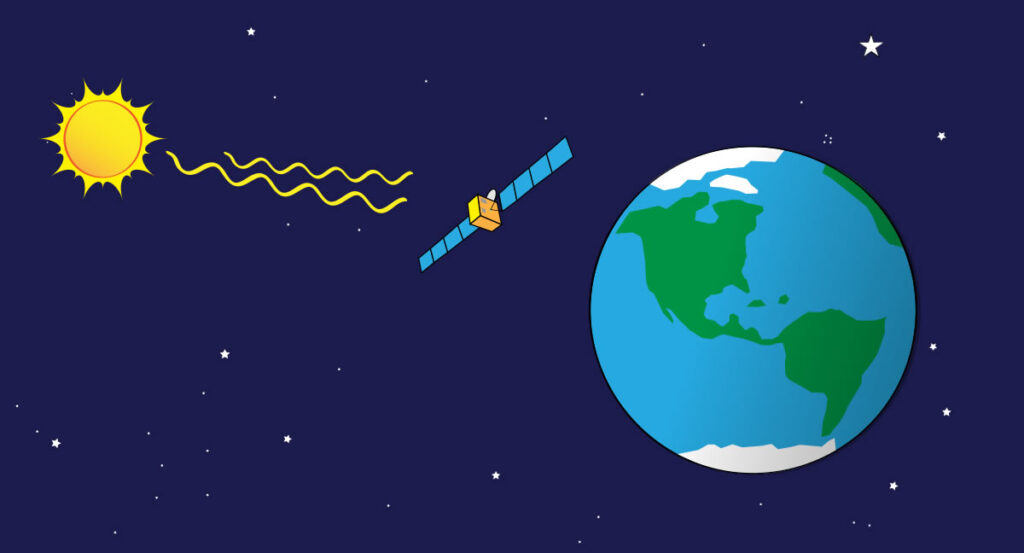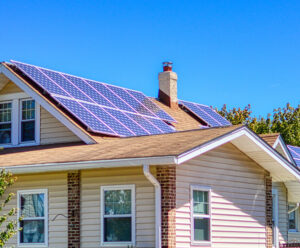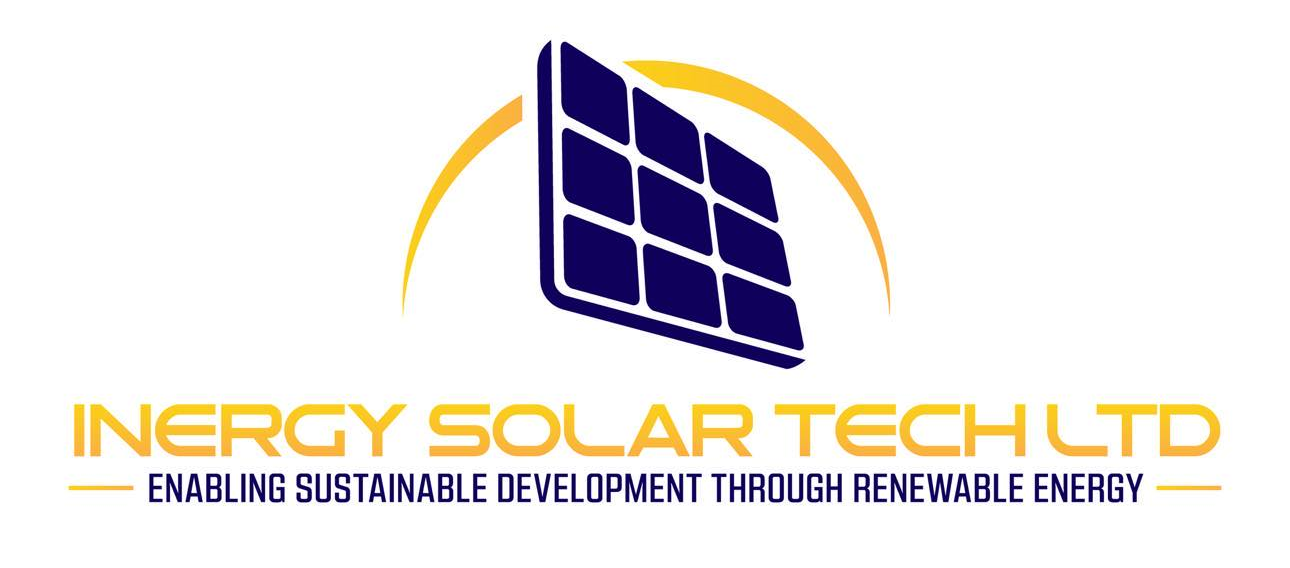
Solar energy has captivated the world’s attention. This clean energy source is increasingly popular among homeowners and business owners, driven by its environmental benefits and technological advancements. Among the many aspects that make solar energy fascinating are the “fun facts about solar energy” laid down in this article which reveal its potential and versatility.
As a renewable energy source, solar power has seen a global surge in popularity. This shift reflects a collective movement towards more sustainable and eco-friendly energy solutions. Solar energy’s ability to harness the sun’s power and convert it into electricity presents a game-changing solution in our quest for a greener future.
Moreover, its appeal lies not just in its capacity to reduce carbon footprints and energy bills. The intriguing and innovative ways solar energy is integrated into our daily lives, from residential rooftops to large-scale solar farms, are equally compelling.
“The sun is simply one big battery for us.”
Elon Musk
Co-founder and CEO of Tesla
The Sun’s Astounding Power
The sun, a colossal celestial powerhouse, showers the Earth with solar energy, an abundant energy source that dwarfs all others. Every day, the sun’s rays deliver solar radiation that is more than sufficient to satisfy global energy demands. This radiant energy, when harnessed through solar technology, presents an opportunity to tap into a virtually inexhaustible supply of power. Unlike conventional energy sources that are limited and contribute to environmental degradation, solar energy offers a sustainable and limitless alternative, showcasing the sun’s immense potential as a provider of clean and renewable energy.
History of Solar Energy Use
The history of solar energy use is a fascinating journey that spans centuries, showcasing the evolution of solar technology from its primitive beginnings to its current status as a cornerstone of the solar industry. Ancient civilizations first harnessed solar power in basic forms, using the sun’s warmth for heating and light. Over time, the development of solar technology accelerated, leading to the creation of sophisticated solar panels and systems. The solar energy industries association has played a pivotal role in this evolution, advocating for solar energy adoption and driving innovation. This historical progression underscores the growing global recognition of solar power as a vital, sustainable energy solution, marking a significant shift from traditional energy sources to cleaner, renewable alternatives.
Solar Energy in Space Missions

Solar energy, a vital renewable energy source, plays a crucial role in powering space missions and satellites. The energy generated by solar panels is indispensable in these endeavors, where traditional energy sources are impractical or unavailable. Solar batteries, designed to endure the extreme conditions of space, store this energy, ensuring a consistent and reliable power supply. These batteries enable satellites and spacecraft to operate continuously, powering everything from onboard instruments to communication systems. The use of solar energy in space missions exemplifies its reliability and the critical role it plays in advancing our exploration and understanding of space.


Innovations in Solar Technology
The realm of solar technology has witnessed a surge of groundbreaking advancements, revolutionizing how we harness and utilize solar energy. These innovations are pivotal in enhancing the efficiency and applicability of solar power, making it an increasingly viable energy solution worldwide. From advancements in solar PV (photovoltaic) systems to innovative storage solutions, the solar industry is continually evolving, offering more efficient and sustainable energy options.
- High-Efficiency Solar PV Panels: Recent developments in solar photovoltaic technology have led to panels with significantly higher efficiency rates, enabling more effective conversion of sunlight into electricity.
- Advanced Photovoltaic PV Cells: Innovations in PV cell technology have resulted in cells that are more efficient at capturing solar energy, even in lower light conditions, enhancing overall energy yield.
- Integration of Tesla Powerwalls: The introduction of Tesla Powerwalls in solar systems represents a significant leap in energy storage solutions, allowing for more efficient storage and use of solar-generated electricity.
- Improved Durability of Solar Panels: Advancements in materials and design have led to solar panels that are more durable and longer-lasting, even in harsh environmental conditions.
- Smart Solar Systems: The integration of smart technology into solar systems, including IoT connectivity and AI-driven performance optimization, has made solar energy more manageable and user-friendly.
Solar Energy and Environmental Impact
 The adoption of solar energy as a clean energy source marks a significant stride in reducing environmental impacts, particularly in the context of carbon emissions. Utilizing solar power significantly diminishes the reliance on fossil fuels, which are major contributors to carbon dioxide
The adoption of solar energy as a clean energy source marks a significant stride in reducing environmental impacts, particularly in the context of carbon emissions. Utilizing solar power significantly diminishes the reliance on fossil fuels, which are major contributors to carbon dioxide
(CO2) emissions and other greenhouse gases. By replacing traditional energy sources with solar energy, we can substantially lower the amount of CO2 released into the atmosphere, combating the greenhouse effect and global warming. The shift towards solar energy not only represents a move to a more sustainable energy source but also reflects a growing global commitment to preserving our environment and reducing the carbon footprint. This transition is crucial in the fight against climate change, offering a path to a cleaner, greener future.
Solar Panels on Water Bodies
The innovative concept of floating solar farms is transforming the landscape of solar installations worldwide. These solar power plants, set afloat on water bodies like lakes and reservoirs, represent a unique fusion of energy efficiency and space utilization. Known as solar farms, these installations harness the sun’s energy without occupying valuable land resources, making them an ideal solution for densely populated or land-scarce areas.
Floating solar farms offer several distinct advantages. Firstly, the cooling effect of water beneath the panels enhances their efficiency and longevity. Additionally, by covering significant water surfaces, these solar installations help reduce water evaporation, conserving water resources while generating electricity. This dual benefit is particularly valuable in regions facing water scarcity.
Moreover, floating solar farms minimize land disturbance, preserving terrestrial ecosystems and biodiversity. They represent a harmonious blend of renewable energy generation and environmental stewardship, showcasing the potential of innovative approaches in the solar industry. As the world increasingly seeks sustainable and efficient energy solutions, floating solar installations stand out as a promising pathway to a cleaner, greener future.
Solar Energy in Daily Life
The integration of solar energy into daily life has become increasingly prevalent, revolutionizing how we power our homes and use everyday gadgets. The versatility of solar energy is evident in various aspects of our daily routines, making it a key component of sustainable living.
- Residential Solar Systems: Homes around the world are increasingly equipped with solar panels. These installed solar panels capture the sun’s energy to power household appliances, lighting, heating, and cooling systems, significantly reducing reliance on traditional power grids and cutting down electricity bills.
- Solar-Powered Gadgets: Beyond residential use, solar energy powers a wide range of gadgets and devices. From solar-powered chargers and outdoor lights to garden equipment, these innovations harness solar energy for efficient and eco-friendly operation.
- Sustainable Living: The adoption of solar systems in homes reflects a growing trend towards sustainable living. Solar energy not only offers a cleaner alternative to traditional energy sources but also promotes energy independence and efficiency.
- Advancements in Solar Technology: With continuous advancements in solar technology, the use of solar energy in daily life is becoming more diverse. This includes the development of more efficient solar panels and the integration of solar power in a wider range of products and applications.
The widespread adoption of solar energy in various facets of daily life underscores its practicality and accessibility. As technology continues to advance, we can expect solar energy to become even more integrated into our everyday lives, further promoting sustainable and eco-friendly living practices.
Solar Power Plants Around the World
The global landscape of renewable energy is dotted with some of the largest and most innovative solar power plants, showcasing the immense potential of solar energy. These facilities, ranging from vast fields of photovoltaic panels to concentrated solar power systems, not only highlight the scalability of solar energy but also its adaptability to different environments. Let’s explore some of the world’s largest and most unique solar power plants:
- Longyangxia Dam Solar Park, China: This is one of the world’s largest solar power plants, sprawling over a vast area and harnessing the sun’s power to generate a significant amount of electricity. Its sheer size and capacity make it a landmark in solar energy development.
- Kamuthi Solar Power Project, India: Known as one of the largest solar installations globally, this solar power plant boasts an impressive array of solar panels and exemplifies India’s commitment to expanding its solar capacity.
- Ivanpah Solar Power Facility, USA: Situated in the Mojave Desert, this concentrated solar power plant utilizes thousands of mirrors to direct solar radiation to a central tower, creating heat to drive turbines. It’s a prime example of concentrated solar power in action.
- Tengger Desert Solar Park, China: Often referred to as the “Great Wall of Solar” in China, this immense solar power plant is part of China’s ambitious plan to expand its renewable energy resources.
- Noor Complex Solar Power Plant, Morocco: This plant is one of the world’s largest concentrated solar power plants. Located in the Sahara Desert, it uses mirrors to concentrate solar energy and generate electricity, showcasing an innovative approach to solar power generation.
These solar power plants not only represent the technological advancements in the field but also the global commitment to transitioning towards cleaner, more sustainable energy sources.
Solar Energy and Wildlife
The expansion of solar farms as a renewable energy source has prompted discussions about their environmental impact, particularly on local wildlife and ecosystems. While solar energy is celebrated for its minimal carbon footprint, the physical presence of solar installations can have varied effects on the surrounding natural habitats.
Solar farms, covering large tracts of land, can alter the local environment. However, with careful planning and design, these impacts can be mitigated. For instance, the space beneath solar panels can serve as a refuge for various plant and animal species, creating a unique microhabitat. Additionally, solar farms can be designed to avoid sensitive wildlife areas, reducing potential disturbances.
Moreover, the shift to solar energy as a primary energy source helps combat climate change, indirectly benefiting wildlife and ecosystems globally. By reducing greenhouse gas emissions, solar farms play a crucial role in preserving natural habitats that are threatened by global warming.
Economic Benefits of Solar Energy
The economic benefits of solar energy are multifaceted, impacting both individual finances and the broader solar industry. The initial cost of solar panels and the solar installation process represent a significant investment. However, this is often offset by the long-term savings on energy bills.
Homeowners and businesses who switch to solar can see a substantial reduction in their energy costs, translating to significant savings over time. This saving money aspect is a key driver behind the growing popularity of solar energy. Additionally, the solar industry creates numerous job opportunities, from solar installers to engineers and technicians, contributing to economic growth.
The solar cost, while initially higher than traditional energy sources, is rapidly decreasing due to technological advancements and increased market competition. This trend makes solar energy an increasingly accessible option for a wider range of consumers, further fueling its growth and adoption.
The transition to solar energy offers not only environmental benefits but also significant economic advantages, both for individual consumers and the wider economy. As the solar industry continues to evolve, these benefits are expected to become even more pronounced, solidifying solar energy’s role as a key player in the global energy landscape.
Future of Solar Energy
The future of solar energy is bright and full of potential, with trends indicating a shift towards more innovative and efficient energy sourcing. One of the fun facts about solar is its ability to evolve continuously, adapting to new technological advancements and environmental needs. As a form of new electricity, solar power is set to become more prevalent, with abundant energy being harnessed more efficiently than ever before.
Advancements in technology are expected to increase the efficiency and reduce the cost of solar panels, making solar energy more accessible to a wider audience. This progress will likely lead to solar power becoming a more dominant form of energy sourcing globally. Additionally, the integration of solar energy with emerging technologies like smart grids and battery storage systems will enhance its usability and reliability.
The future will also likely see an increase in the use of solar energy in various sectors, from residential to industrial, further solidifying its position as a key player in the global energy market. With ongoing research and development, solar energy will continue to offer a sustainable and abundant source of power, contributing significantly to a cleaner and greener future.
Solar Energy Myths Debunked
There are several misconceptions surrounding solar energy that often lead to hesitation in its adoption. Let’s debunk some common solar myths:
Myth: Solar Panels Don’t Work on Cloudy Days:
Contrary to popular belief, average solar panels are capable of generating electricity even on cloudy days, although their efficiency might be slightly reduced.
Myth: Solar Energy is Too Expensive:
The cost of solar panels has significantly decreased over the years. Moreover, the long-term savings on energy bills often outweigh the initial investment.
Myth: Solar Panels Require Constant Maintenance:
Solar panels require minimal maintenance. They are designed to withstand various weather conditions and typically only need occasional cleaning.
Myth: Solar Energy is Not Efficient Enough:
Modern solar panels are highly efficient, and ongoing technological advancements continue to improve their performance and energy output.
Myth: Solar Panels Will Damage Your Roof:
When installed correctly by a professional solar installer, solar panels do not damage your roof. In many cases, they can actually protect and preserve the part of the roof they cover.
By understanding the facts and dismissing these misconceptions, more people can confidently embrace solar energy as a viable and beneficial energy source.
Solar Energy in Extreme Climates
The adaptability of solar energy systems in extreme climates is a testament to the durability of solar systems. Solar panels in extreme conditions, such as scorching deserts or frigid polar regions, continue to operate effectively, demonstrating their resilience. In hot climates, solar panels can withstand high temperatures and still generate significant amounts of energy, albeit with some efficiency loss due to heat. Conversely, in cold environments, solar panels can perform even more efficiently, as lower temperatures can enhance electricity generation.
Manufacturers have developed solar panels and systems specifically designed to endure harsh environmental conditions, ensuring both durability and longevity. These advancements in technology mean that solar energy is not just limited to temperate climates but is a viable energy solution even in the most challenging environments. This adaptability further solidifies solar energy’s position as a versatile and reliable energy source, capable of meeting diverse energy needs across the globe.
Conclusion
Summarizing solar power and its journey reveals a fascinating and rapidly evolving landscape. The solar energy benefits are numerous, ranging from environmental sustainability to economic advantages. Throughout this article, we’ve explored the intriguing and often fun facts about solar energy, highlighting its role in our daily lives and its potential in shaping the future of energy.
The future of solar energy looks bright, with continuous advancements making it more efficient, affordable, and accessible. As a key renewable energy source, solar power is set to play a pivotal role in the global transition to cleaner energy solutions. Its adaptability in extreme climates and its growing presence in various sectors underscore its versatility and potential for widespread adoption. In conclusion, solar energy is not just a part of our energy mix; it is fast becoming a cornerstone in the quest for a sustainable and energy-secure future.

